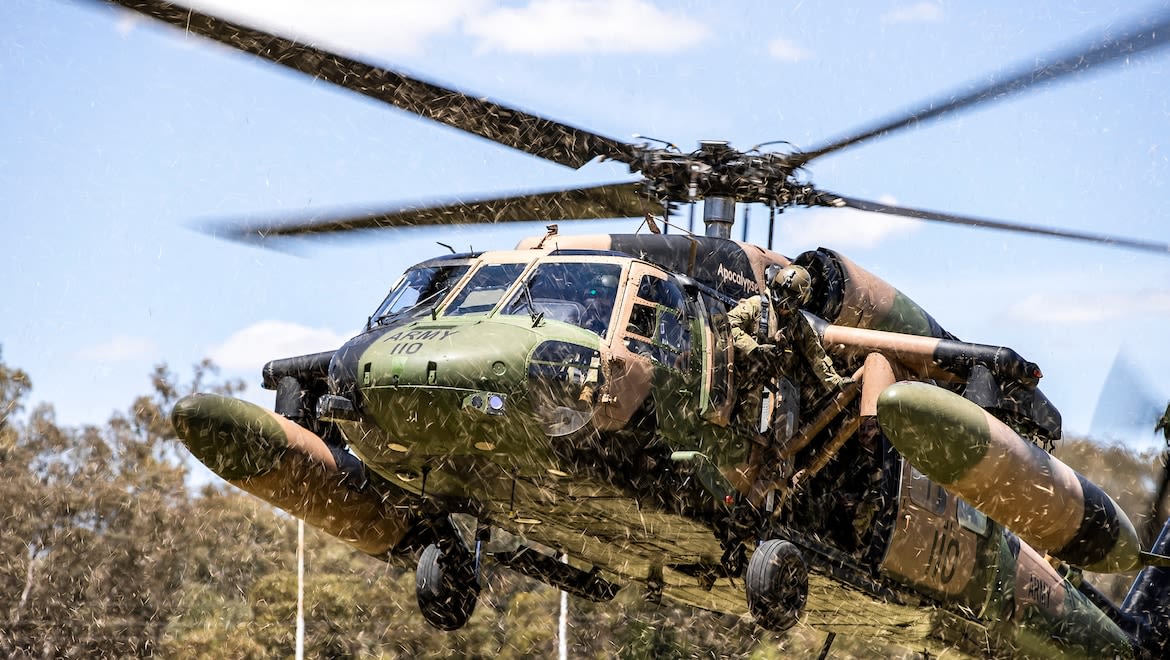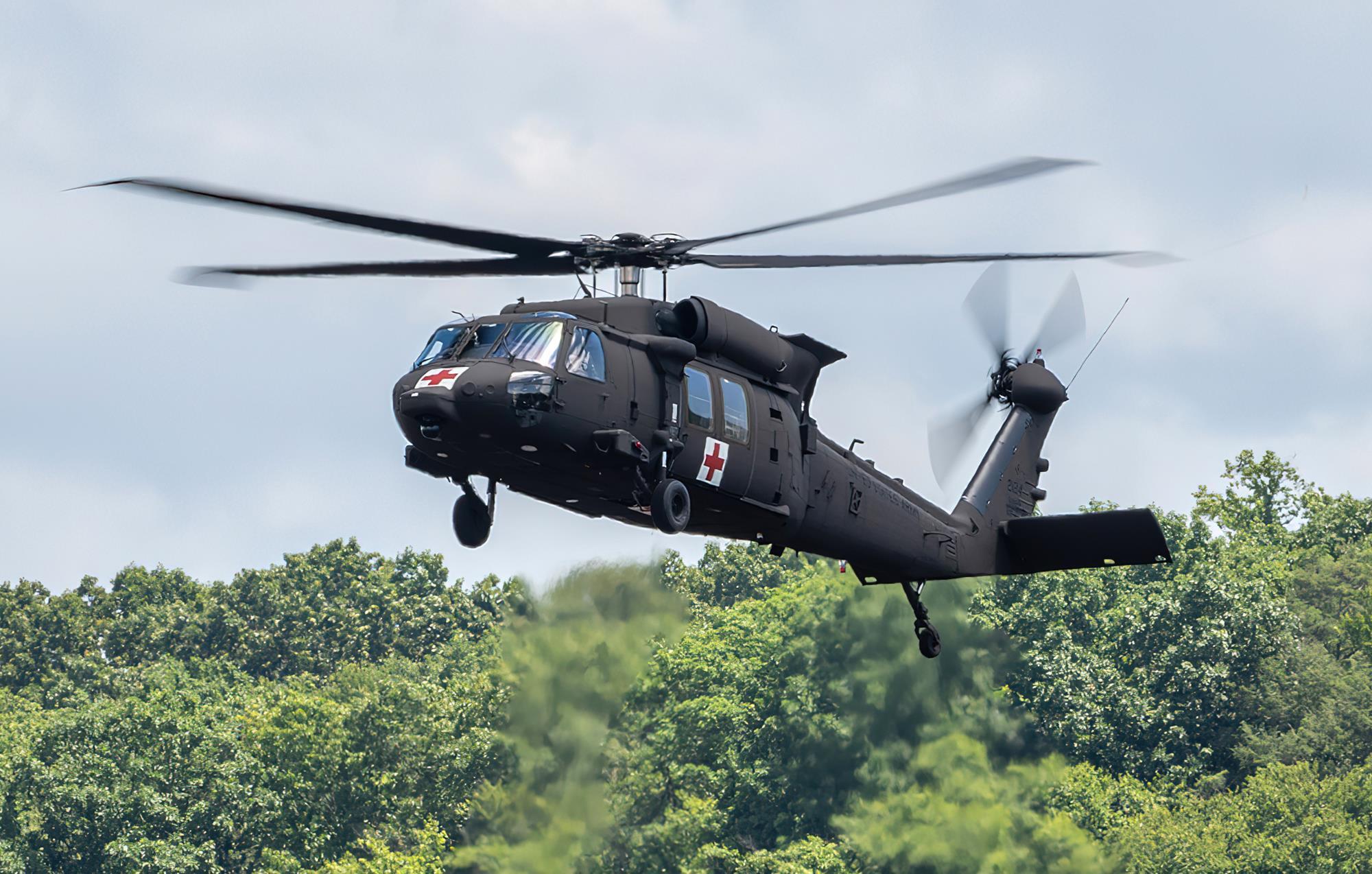The UH-60 Helicopter: Navigating With Its Background, Design, and Significant Role in Aviation
The UH-60 helicopter, usually referred to as the Black Hawk, stands as a testimony to the improvements in aviation innovation and its obvious impact on both army and private procedures. From its simple starts to its existing standing as an icon of dependability and versatility, the evolution of the UH-60 has actually been marked by constant advancement and adjustment to meet the advancing needs of the aeronautics sector. As we dive right into its history, style complexities, and the essential role it plays in various sectors, a deeper gratitude for this renowned helicopter arises, clarifying the substantial contributions it has actually made to the realm of aviation.
Development of the UH-60 Helicopter

The evolution of the UH-60 helicopter can be mapped back to the need for a versatile and reliable utility airplane that could fulfill the demanding demands of modern-day armed forces procedures. Created by Sikorsky Airplane, the UH-60 Black Hawk first took flight in 1974, with the U.S. Military becoming its main operator. Throughout the years, the UH-60 has actually gone through several upgrades and variants to improve its capacities and efficiency.

Style Innovations and Attributes

Additionally, the UH-60 features an innovative avionics collection that consists of sophisticated navigation systems, interaction devices, and electronic displays. These technological advancements enhance situational awareness for the crew, enhancing total mission performance and safety. The helicopter's large cabin design facilitates fast and easy loading and discharging of soldiers, equipment, and casualties, making it a functional asset for armed forces operations and disaster alleviation efforts.
In addition, the consolidation of composite materials in essential structural components decreases weight while preserving toughness, enhancing the UH-60's efficiency and gas performance. The UH-60 helicopter's ingenious design aspects collectively add to its reputation as a trustworthy and extremely capable aircraft in both armed forces and private aeronautics markets.
Armed Forces and Private Applications
With versatile abilities matched for a variety of operational needs, the UH-60 helicopter serves both army and civilian sectors effectively. The UH-60's advanced avionics, defensive systems, and adaptability have strengthened its placement as a cornerstone of armed forces helicopter fleets.
Additionally, the UH-60's adaptability for VIP transportation and overseas procedures even more highlight its value in noncombatant applications. Whether in armed forces or noncombatant use, the UH-60 helicopter continues to prove its worth as a functional and indispensable aerial system.
Effect On Aviation Operations
Having actually established its value why not try these out in army and noncombatant applications, the UH-60 helicopter's effect on aeronautics procedures extends past its functional abilities to affect a wide variety of aerial missions. In army setups, the UH-60 plays a crucial function in troop rescue, transport and search procedures, medical evacuation, and special operations support.
In civilian operations, the UH-60 serves different vital functions, such as firefighting, legislation enforcement assistance, calamity relief initiatives, and aerial surveys. uh-60. Its flexibility enables quick reactions to emergencies and natural calamities, assisting in saving lives and safeguarding communities. Additionally, the UH-60's reliability and endurance make it a preferred choice for energy missions, including transport of cargo and workers to remote areas. In general, the UH-60 helicopter considerably influences air travel operations by offering unrivaled capacities and assistance across a wide range of goals.
Future Advancements and Prospects
The development of the UH-60 helicopter is positioned to transform air travel capacities and reshape functional paradigms in the coming years. Developments in technology and layout are driving the growth of next-generation UH-60 versions that guarantee boosted objective, rate, and agility flexibility. One essential location of focus for future UH-60 models is improving self-governing capacities to boost functional effectiveness and security. By incorporating advanced autonomous trip systems, the UH-60 can minimize pilot work, enable intricate missions in challenging atmospheres, and boost general goal efficiency.
In addition, there is a growing focus on sustainability and gas performance in the design of future UH-60 helicopters (uh-60). Producers are discovering brand-new products, propulsion systems, and aerodynamic improvements to reduce environmental effect and operating expense. These advancements not just benefit the environment yet also add to the long-term viability and competition of the UH-60 in the rapidly advancing aviation sector
Final Thought

The UH-60 helicopter, usually referred to as the Black Hawk, stands as a testament to the developments in aeronautics innovation and its obvious influence on both army and private operations.Having developed its significance in civilian and see here now army applications, the UH-60 helicopter's impact on air travel procedures extends beyond its versatile abilities to affect a wide variety of airborne objectives. Overall, the UH-60 helicopter considerably affects aeronautics operations by giving unmatched capacities and support across a broad spectrum of goals.
The development of the UH-60 helicopter is poised to reinvent aeronautics capacities and improve functional standards in the coming years. As innovation continues to advancement, the future advancements and prospects for the UH-60 helicopter remain promising, ensuring its ongoing importance in the area of aviation.